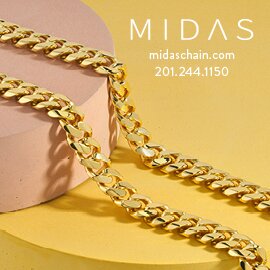PUBLISHER'S NOTE: An earlier version of this editorial was printed in the September 2018 issue of The Retail Jeweler. This is the most up-to-date version.
By Frank Dallahan, Editor, The Retail Jeweler
The Federal Trade Commission recently issued its revised Guides for the Jewelry, Precious Metals, and Pewter industries. Their stated purpose of this effort is “to advise marketers how to make non-deceptive claims about jewelry products rather than preventing unfair practices.”
For more information on the other FTC Guidelines reviewed, please click here.
While each of the topics reviewed by the FTC is important, the most eagerly and nervously awaited were the ones addressing cultured diamonds and diamond definition. Within the past couple of years, lab-created diamonds have occupied a great deal of time, attention, and thought throughout the industry. The discussion is eerily similar to what took place the last time the Guides were changed in the 1980s. Then, it was the “natural” gemstone groups who fought hard against giving lab created gemstones a modicum of respectability. They favored the use of the word “synthetic” to describe the fact that lab created gemstones were different and, therefore, not as good as those coming from the earth. The position of the diamond people today was virtually identical with the position of the Colored Gemstone importers in the 80s.
The diamond sector of the jewelry industry had an intense interest in the outcome of what the guides said about lab-grown and mined diamonds. Both sides of the question wanted their way to prevail. The mined diamond group wanted to retain the use of the word natural. They also would have preferred to have the word synthetic connected with lab created diamonds.
Lab-created diamonds won the argument with the declaration from the FTC, that a diamond is a diamond as long as it is chemically, optically, and physically identical with mined diamonds. The caveat of the 1980’s that a lab created diamond must still retain the phrase “lab-created” associated with a manufacturer’s name such as Chatham “lab-created” diamonds. The FTC allowed sellers of mined diamonds to continue to be able to use words like: natural, real and genuine. The reality, I suspect, is those descriptors are immaterial. The important word in any discussion with a consumer is the word diamond. After that it becomes a matter of how well the diamond is cut; what the clarity is; what the color is, what does it weigh? And, finally, how much does the diamond cost?
I think mined diamonds have a distinct edge over lab created diamonds because the jeweler has to explain what a lab created diamond is. How is it created? How is it manufactured? The jeweler needs to create a unique selling proposition for the lab created diamond. While the lab created diamond is chemically, optically, and physically identical to a diamond from the earth, a jeweler will likely differentiate the two by stating mined diamonds provide employment and education for many people throughout the world and especially in Africa. Whereas, many created diamonds originate in China and provide education and employment to many Chinese people, the difference between the two products comes down to price and the environment.
The environment question is one promoted by lab-created producers, though they fail to acknowledge the heavy use of electric power to produce the lab-created diamonds. And, of course, the mined diamond producers are accused of tearing up the earth without any regard for the environmental impact they cause. It is a point counterpoint argument with neither side scoring points.
While branding is not a major factor in either group, there are several mined diamond producers who do have a semblance of brand names, though in the main they are trade names. Lazare Kaplan, Julius Kline, Hearts on Fire, Forevermark are a few that may have an edge on the lab-created producers when it comes name recognition and/or endorsement from retail jewelers but ultimately, it is the trust emanating from the jeweler that is most important to the consumer.
Lab-created diamond producers do not have their act together in developing a branding story that would create a needed unique selling proposition. The impression is that the product carries a price advantage. DeBeers announcement that their lab-created diamonds are ok and appropriate for fun, fashion jewelry and that they are only worth $800 per carat, puts the lab-created producers into a box. Of course, these conditions will probably change as we go forward. We will likely see a branding effort develop. We’ll also see a lab-created association emerge as well.
The battle lines have been joined. The FTC Guidelines started the conversation going within the trade. The reality is nothing much has changed except for the DeBeers move into the created diamond business and positioning it as fun jewelry.
The FTC Guidelines likely will not have a material effect on the jewelry business going forward. It really isn’t that much different than what happened with the colored gemstones in the 80’s.
The more things change, the more they stay the same!

